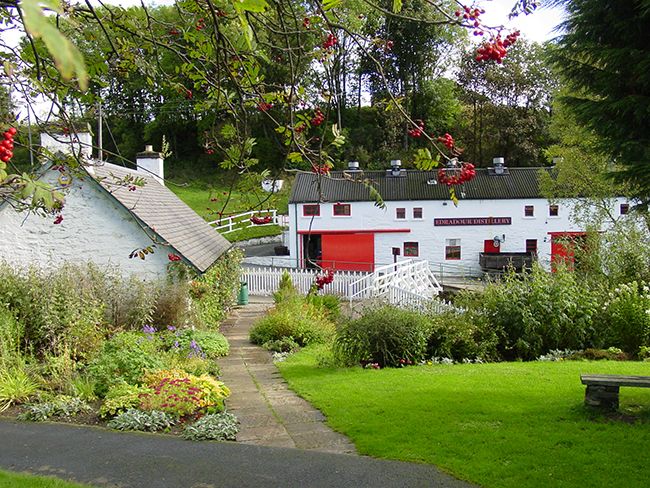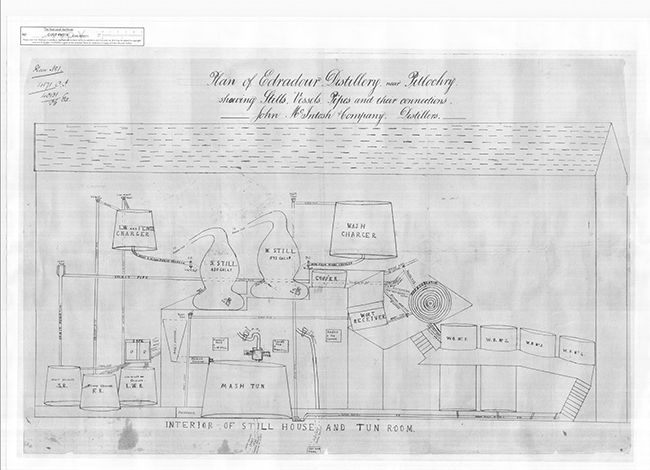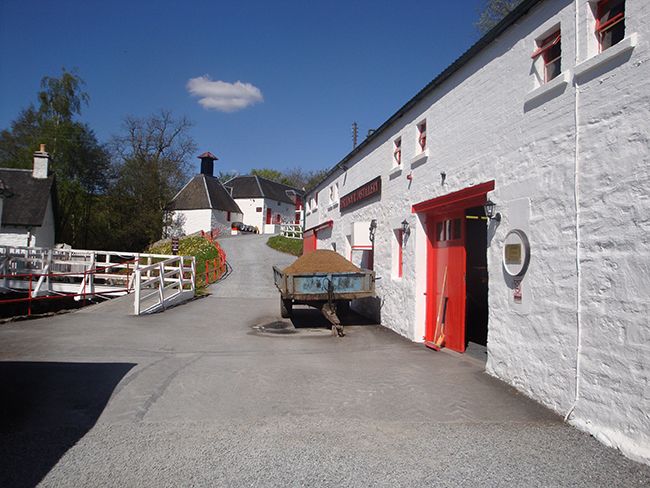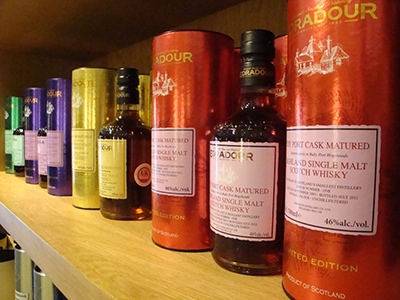Edradour – The Smallest Traditional Distillery in Scotland
Did you know that the smallest distillery in Scotland – Edradour – is near the original Lindores Abbey? Friar John Corr of Lindores Abbey paid duty for eight bolts of malt to make aqua vitae for King James IV in 1494. That is the oldest record of whisky, or aqua vitae, to date. In 1644, when Scotland increased higher duty on alcohol through the introduction of the Scottish Excise Act, Edradour operated illegally as one of the many of the other illicit stills around Scotland.
History of Edradour
The official records of Edradour started in 1825. Before that, we need to look at the history of whisky in Scotland. By 1823, the government of Scotland introduced the Excise Act which encouraged legal ownership through a reduction of duty paid on spirits. Because of the 1823 Excise Act, many distilleries took out licenses and began their history as official distilleries. Edradour is not different. In 1825, Edradour took its license and became a legal distillery through a local farmer cooperative. Alexander Forbes was the license holder. The farmers named the distillery Glenforres.
Expansion of Edradour
By 1834, the farmer cooperative wrote to the Duke of Atholl to request for new buildings for the distillery. As a result of the request, two of the representatives, James Scott and Duncan Stewart, became the official tenants of the distillery in 1837. They also renamed the distillery, Edradour, which means “the land between two rivers”.
As the distillery progressed, the farmers decided to start a formal cooperative. In 1841, John McGlashan and Co formed with eight members – Alexander Forbes, Duncan Stewart, James Scott, James Robertson, Alexander Stewart and William McIntosh. However, misfortune befell the cooperative and in 1853, James Reid, another local farmer, took over the distillery as James Reid and Company. Edradour struggled under James’ leadership and in 1884, the ownership of the distillery transferred to John McIntosh, the son of William McIntosh.
The McIntosh Legacy
Under John McIntosh’s leadership, the distillery began to grow. He rebuilt the distillery and rebranded the whisky. The rebuilding was a success and the distillery flourished. We can even see a surviving plan of the interior of the still house and the tun room today at Edradour.
As Edradour gained popularity, Alfred Barnard visited the distillery. Alfred Barnard, as you already know, wrote the most important book on whisky – The Whisky Distilleries of the United Kingdom – in 1887. In the book, Barnard waxed lyrical about Edradour and described the distillery as “a few ancient buildings not unlike a farmstead”.
By 1907, the flourishing distillery saw the addition of one more person – Peter McIntosh, the nephew of John. Peter continued the McIntosh lineage at Edradour. However, as the years passed, Edradour needed a new partner to expand yet again. In 1911, Edradour took in John Stewart, a wine and spirit merchant as a partner to increase their scope and distribution. The distillery functioned through the First World War and emerged largely unscattered.
The Mafia Took Over
In 1933, William Whiteley purchased Edradour. Before the purchase, Whiteley bought the Edradour whisky for his flagship blends, “House of Lords” and “King’s Random”. He probably got tired of buying the whisky and decided to buy the distillery instead. Haha…
Whiteley retired in 1938, and his successor was none other than Irving Haim, an agent for Frank Costello. Costello was the feared Godfather of mafia fame in New York and headed one of the five families. While nothing changed the production at the distillery, the association with the mafia appeared to give Edradour a more attractive appeal. Edradour continued to produce whisky blends “House of Lords” and King’s Random” and grew in popularity even after the Second World War.
As the world moved along, modernity appeared in Edradour. In 1947, electricity replaced the water wheel and the distillery received consistent power from then onwards. It continued to produce blends until 1976, where Haim passed on.
The Beginning of Modernity and the Single Malt Era
After Haim’s death, the distillery was sold to an American/Australian business consortium for a brief six years before getting bought over by Pernod Ricard. Nonetheless, it managed to snag the Queen’s Award in 1980. Pernod Ricard expanded the distillery by adding a new visitor centre in Edradour in 1983.
Pernod also introduced a new Edradour Single Malt – the Edradour 10 Years Old. At the same time, the King’s Random blend was discontinued. Pernod used the bulk of the spirit for their house blend (Clan Campbell) and the House of Lords while reserving some for its single malt.
Edradour moved back into Scottish Hands
Signatory Vintage Ltd bought Edradour in 2002, effectively moving it back into Scottish hands after 26 years of foreign ownership. Andrew Symington, the founder of Signatory Vintage Ltd, is also a Keeper of the Quaich. Unfortunately for Symington, a flash flood in August damaged the distillery. It was lucky that the flood narrowly missed the still house!
Rebuilding took some time, but Symington soon had the distillery up and about again.
The New Era Begins
Andrew Symington expanded the whisky portfolio of Edradour. In 2003, he started distillation of a peated version of Edradour, named Ballechin. He also started major refurbishment of the old buildings. One of the first new builds was a new Tasting Bar at the distillery in 2006. He also moved the operations of Signatory Vintage to Edradour. Symington did not want to continue the Edradour’s tradition of bottling offsite, so he built a new bottling facility at the distillery in 2007. Edradour now bottles at the source, creating more appeal to whisky drinkers around the world. The expansion continued with the opening of the Caledonia Hall (for events) and a new dunnage warehouse (to mature Edradour and Ballechin whisky onsite) in 2010.
Edradour Whisky Range
Edradour has both peated and unpeated whiskies. The peated whisky range is Ballechin while the unpeated one is named after the distillery. The core range includes the 10-year-old and the 12-year-old single malt, as well as an 18-year-old single malt. Edradour also experiences with wine casks and released whisky matured in Port, Burgundy, Sauternes and Chardonnay casks.
We also spotted many independent bottlings of Edradour, so there is plenty to choose if you want to grab a bottle or two from Edradour distillery. We also did a review on an Edradour single cask. You can read it here.
The Distillery Moving Forward
We believe that under Andrew Symington and Signatory Vintage, Edradour can only go from glory to glory. Symington became the Master of the Quaich in 2012 and Des McCagherty, of Signatory Vintage and Edradour, became Keeper of the Quaich in 2013.






